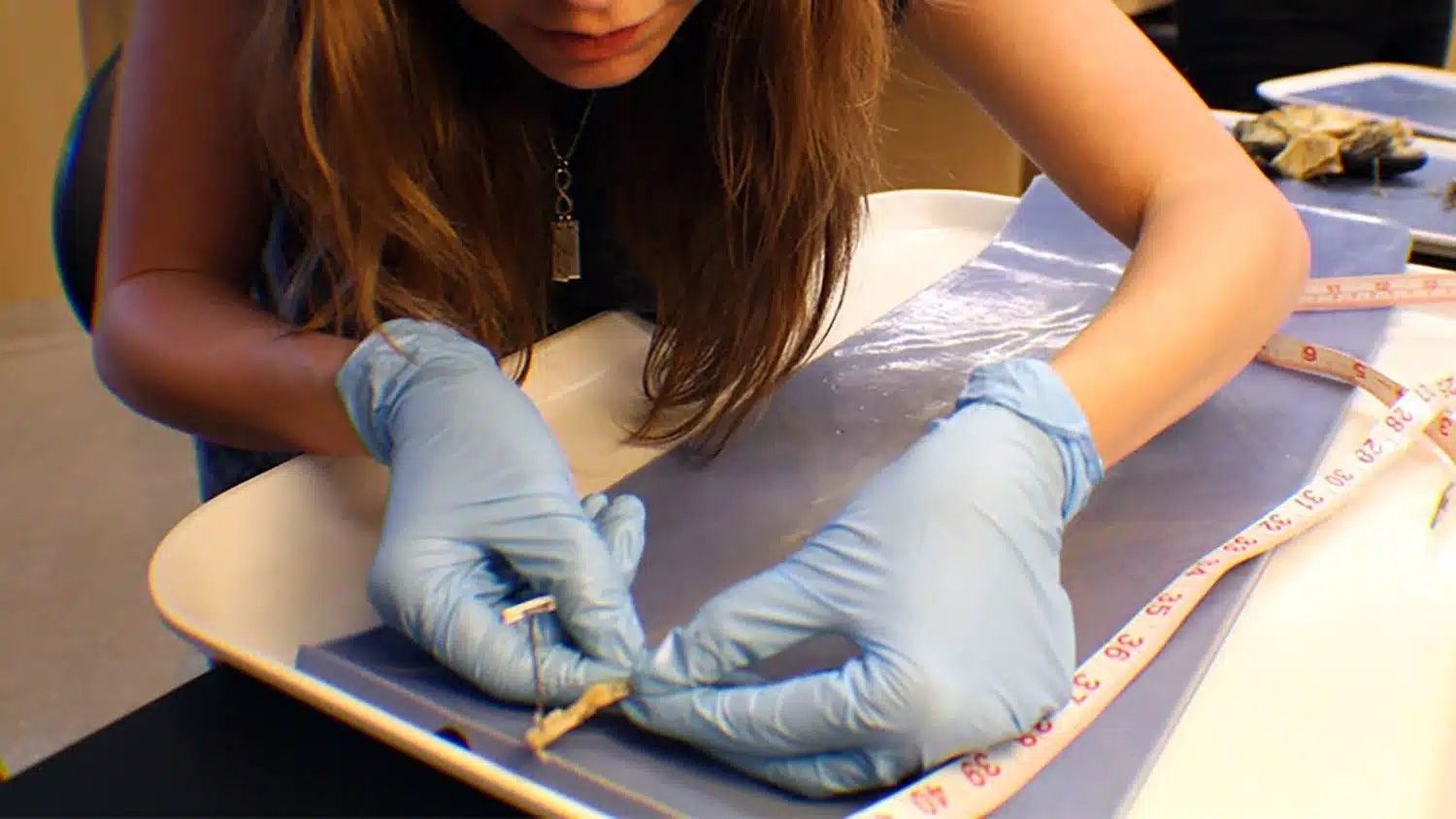Study Finds Significant Variation in Anatomy of Human Guts

New research finds there is significant variation in the anatomy of the human digestive system, with pronounced differences possible between healthy individuals. The finding has implications for understanding the role that the digestive tract’s anatomy can play in affecting human health, as well as providing potential insights into medical diagnoses and the microbial ecosystem of the gut.
“There was research more than a century ago that found variability in the relative lengths of human intestines, but this area has largely been ignored since then,” says Amanda Hale, co-first author of the study and a Ph.D. candidate at North Carolina State University. “When we began exploring this issue, we were astonished at the extent of the variability we found.”
“If you’re talking to four different people, odds are good that all of them have different guts, in terms of the relative sizes of the organs that make up that system,” says Erin McKenney, corresponding author of the study and an assistant professor of applied ecology at NC State. “For example, the cecum is an organ that’s found at the nexus of the large and small intestine. One person may have a cecum that is only a few centimeters long, while another may have a cecum the size of a coin purse. And we found similar variability for many digestive organs.”
In another striking example, the researchers found that women tend to have longer small intestines than men.
“Because having a longer small intestine helps you extract nutrients from your diet, this finding supports the canalization hypothesis, which posits that women are better able to survive during periods of stress,” says Hale.
“Given that there is more variation in human gut anatomy than we thought, this could inform our understanding of what is driving a range of health-related issues and how we treat them,” says McKenney. “Basically, now that we know this variability exists, it raises a number of research questions that need to be explored.”
For this study, the researchers measured the digestive organs of 45 people who donated their remains to the Anatomical Gifts Program at the Duke University School of Medicine.
In addition to shedding light on the unexpected variability in human anatomy, this project also led to rediscovering the importance of teaching anatomical variation to medical students.
“It’s particularly important in medical training, because if students are only learning about a ‘normal’ or ‘average’ anatomy, that means they are not going to be familiar with the scope of human variation,” says Roxanne Larsen, co-author of the paper and an associate professor of veterinary and biomedical sciences at the University of Minnesota. “It’s increasingly clear that the medical field is moving toward individualized medicine to improve patient outcomes and overall health and well-being. Garnering experience in understanding anatomical variation can play a critical role in helping future doctors understand the importance of individualized medicine.”
“We’re excited about this discovery and future directions for the work,” McKenney says. “It underscores just how little we know about our own bodies.”
The paper, “Hidden Diversity: Comparative Functional Morphology of Humans and Other Species,” is published in the open-access journal PeerJ. The paper was co-authored by Janiaya Anderson, a former undergraduate at NC State; Colleen Grant, a former research scientist at NC State; and by Rob Dunn, William Neal Reynolds Distinguished Professor of Applied Ecology and Senior Vice Provost for University Interdisciplinary Programs at NC State.
-shipman-
Note to Editors: The study abstract follows.
“Hidden Diversity: Comparative Functional Morphology of Humans and Other Species”
Authors: EA McKenney, North Carolina State University and the North Carolina Museum of Natural Sciences; AR Hale, J Anderson and C Grant, North Carolina State University; R Larsen, Duke University School of Medicine and University of Minnesota; and RR Dunn, North Carolina State University and University of Copenhagen.
Published: April 24, PeerJ
Abstract: Gastrointestinal (GI) morphology plays an important role in nutrition, health, and epidemiology; yet limited data on gastrointestinal variation have been collected since 1885. Here we demonstrate that students can collect reliable data sets on gut morphology; when they do, they reveal greater morphological variation for some structures in the GI than has been documented in the published literature. We discuss trait variability both within and among species, and the implications of that variability for evolution and epidemiology. Our results show that morphological variation in the GI tract is associated with each organ’s role in food processing. For example, the length of many structures was found to vary significantly with feeding strategy. Within species, the variability illustrated by the coefficients of variation suggests that selective constraints may vary with function. Within humans, we detected significant Pearson correlations between the volume of the liver and the length of the appendix (t-value = 2.5278, df = 28, p = 0.0174, corr = 0.4311) and colon (t-value = 2.0991, df = 19, p = 0.0494, corr = 0.4339), as well as between the lengths of the small intestine and colon (t-value = 2.1699, df = 17, p = 0.0445, corr = 0.4657), which are arguably the most vital organs in the gut for nutrient absorption. Notably, intraspecific variation in the small intestine can be associated with life history traits. In humans, females demonstrated consistently and significantly longer small intestines than males (t-value15 = 2.245, p = 0.0403). This finding supports the female canalization hypothesis, specifically, increased female investment in the digestion and absorption of lipids.
This post was originally published in NC State News.
- Categories:


